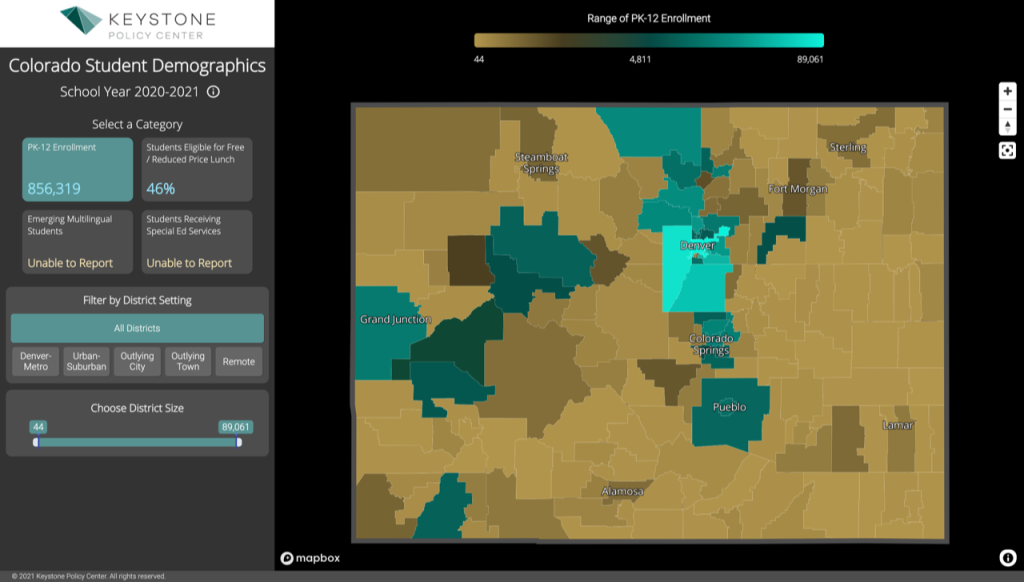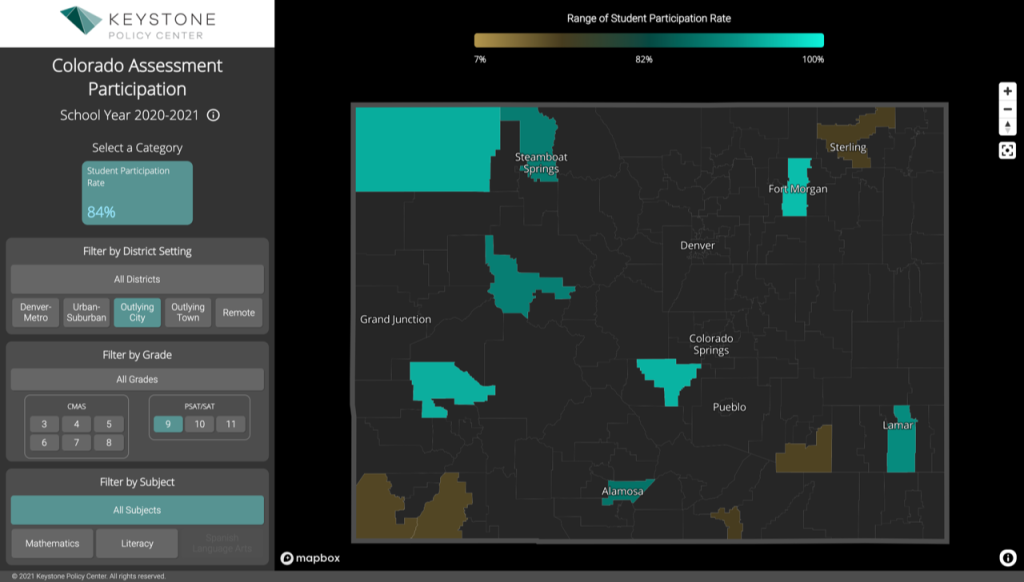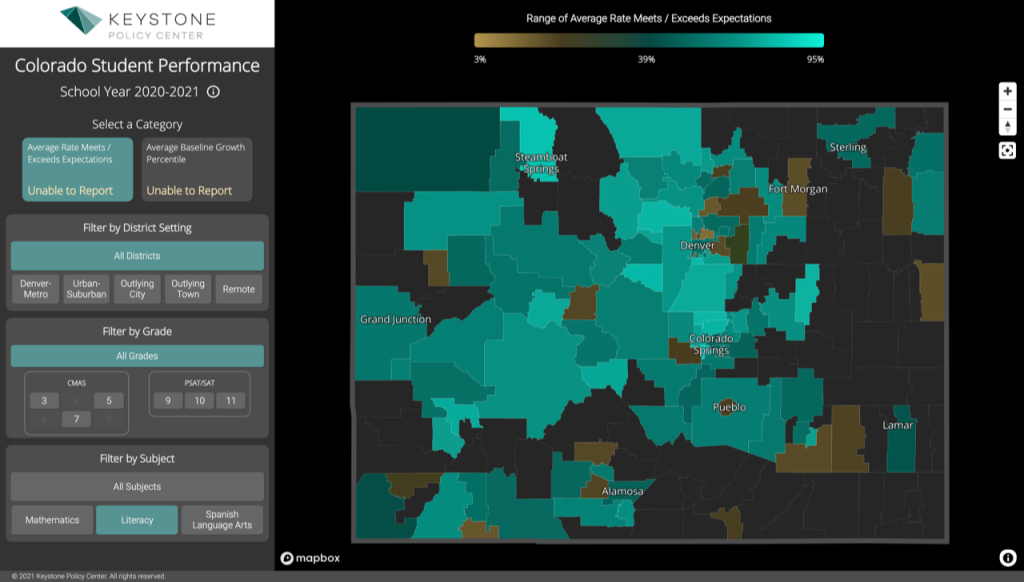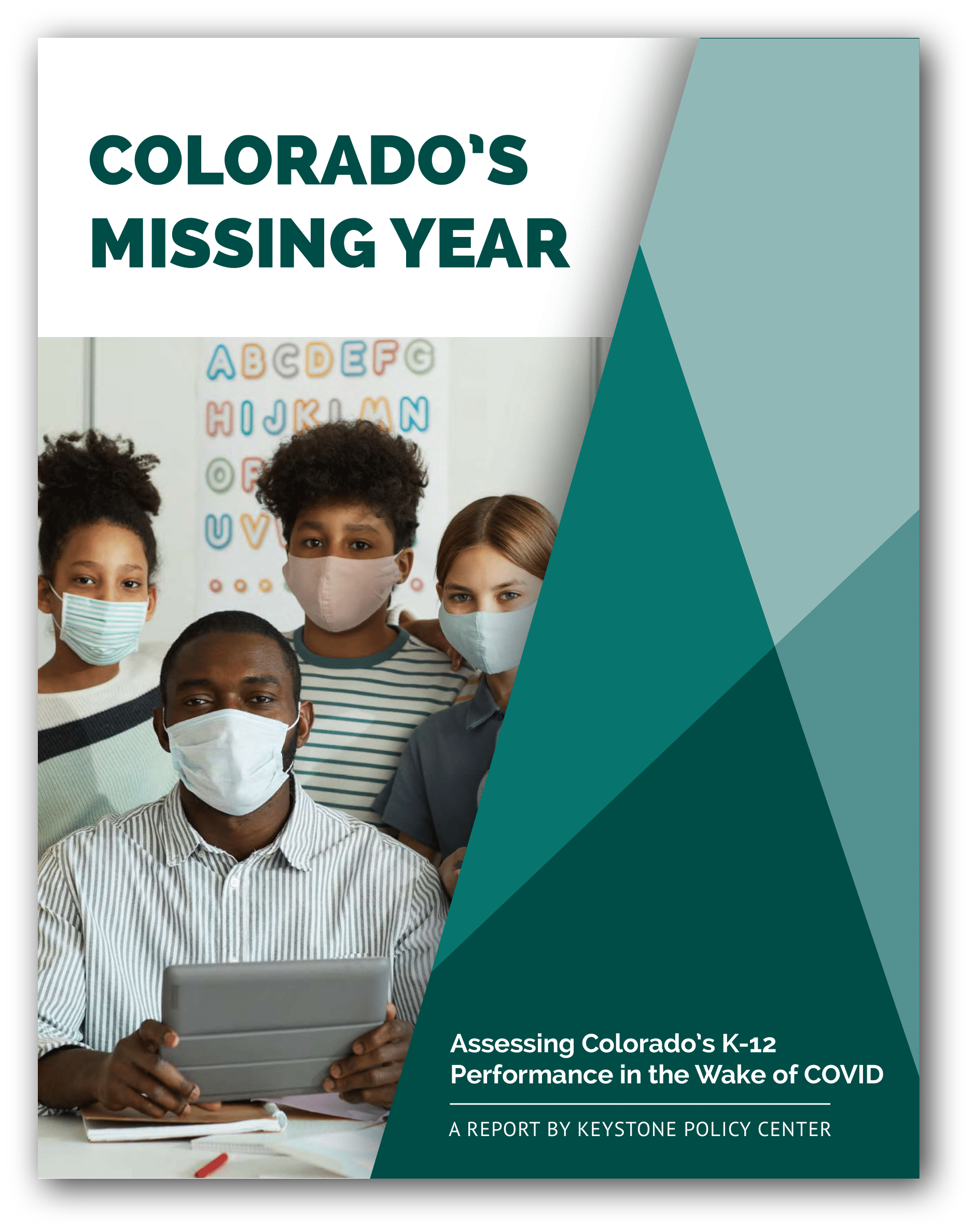Colorado’s Missing Year
In October 2021, the Keystone Policy Center released a report titled Colorado’s Missing Year analyzing data on Colorado education during the pandemic, which revealed critical gaps in student learning across the state but also indicated potential bright spots. The data paints a revealing picture of student participation and achievement during the pandemic.
For students worldwide, the 2020-2021 school year was arguably the most disruptive and difficult schooling experience for students, parents and educators in modern times. This included Colorado where student well-being and achievement has been dramatically impacted by the pandemic. While there is somewhat limited publicly available data, there remains much in the data that can and should be used to inform state education policy and practice. The data shows that there are critical gaps in student learning across the state that must be addressed, as well as some bright spots. Some key takeaways, covered in more detail throughout the report, include:
- There was a substantive decline in assessment participation rates across the state combined with high variability in participation rates with ranges from below 10% to multiple districts with 100% participation.
- There were fewer assessments given in 2021 so there was accordingly less assessment data overall when compared to earlier years.
- Statewide 5th grade literacy performance declined slightly, from 48.4% of students meeting or exceeding expectations in 2019 to 47.2% of students in 2021. The statewide declines in 4th grade math were far greater, from 35.7% in 2019 to 28.5% in 2021.
- While it is challenging to compare SAT performance from 2019 to 2021, as 2019 performance data was reported differently than prior years, 11th grade SAT scores increased from 2019 to 2021 with 60% of 11th graders meeting or exceeding expectations in literacy and 36.4% in math.
- Math performance continues to lag literacy performance at all education levels and must be a focus for future improvements to programming.
- Performance continues to correlate with student demographics, although the level of correlation varies dramatically across geographies, grade levels and subjects.
Many states, including Colorado, have paused state accountability which has in some cases limited the public data available. While other researchers have stepped in to address this gap, it is essential that governmental agencies continue to be trusted sources for information on both program offerings and student outcomes, both academic and otherwise. This report details how these national themes have played out in Colorado as a single use case and analyzes the impact on student learning as measured by the state mandated assessments, the Colorado Measures of Academic Standards, and Colorado PSAT and SAT.
Colorado’s Missing Year: Charter School Performance
In February 2022, Keystone Policy Center released its second report analyzing public data to assess the impact the COVID-19 disruption had on Colorado education. Entitled Colorado’s Missing Year: Charter School Performance, the report explores recent enrollment and academic performance data to examine how charter schools fared relative to the state and other school district managed public schools in the wake of the COVID-19 pandemic.
The charter school report analyzes school enrollment trends, student participation in academic assessments, student academic performance, and academic growth. Among the key findings included in the report are:
- The percent of Colorado students enrolled in charter schools continues to grow, and charter schools saw increases in student enrollment during COVID-19 despite large declines in overall enrollment in public schools generally in the state.
- On average, charter schools had higher rates of student participation on statewide assessments of academic performance in Literacy and Math in the most recent year.
- On those assessments, charter schools had higher proficiency rates than district-run schools statewide and the majority of charter schools also outperformed their district average, consistent with historic performance trends.
- While demographics are associated with proficiency rates for all schools, the relationship between school demographics and assessment performance is weaker in charter schools than in district managed schools.
- Academic growth in charter schools, as in district-run schools, varies widely by grade and subject area in 2020-21 and should be considered with caution at the school level.
Listen to the following episode of the Keynotes Podcast highlighting the Colorado’s Missing Year report.
Keystone Policy Center has also published a set of interactive maps available below detailing the district-by-district student performance, participation, and demographics based on the data in the reports.
Demographics Map

Participation Map

Performance Map








 Login
Login





